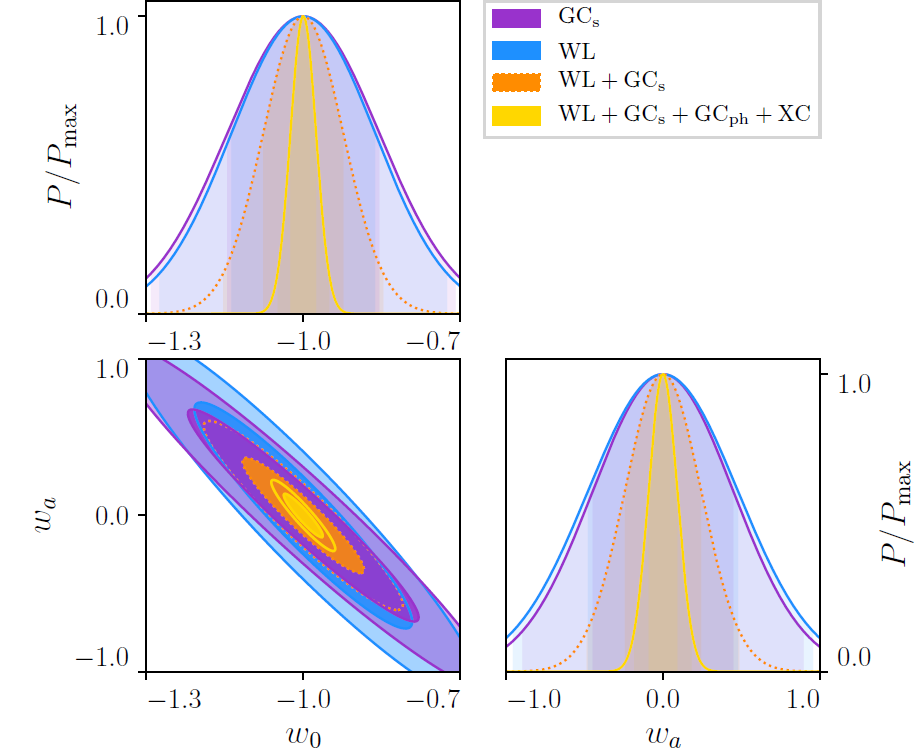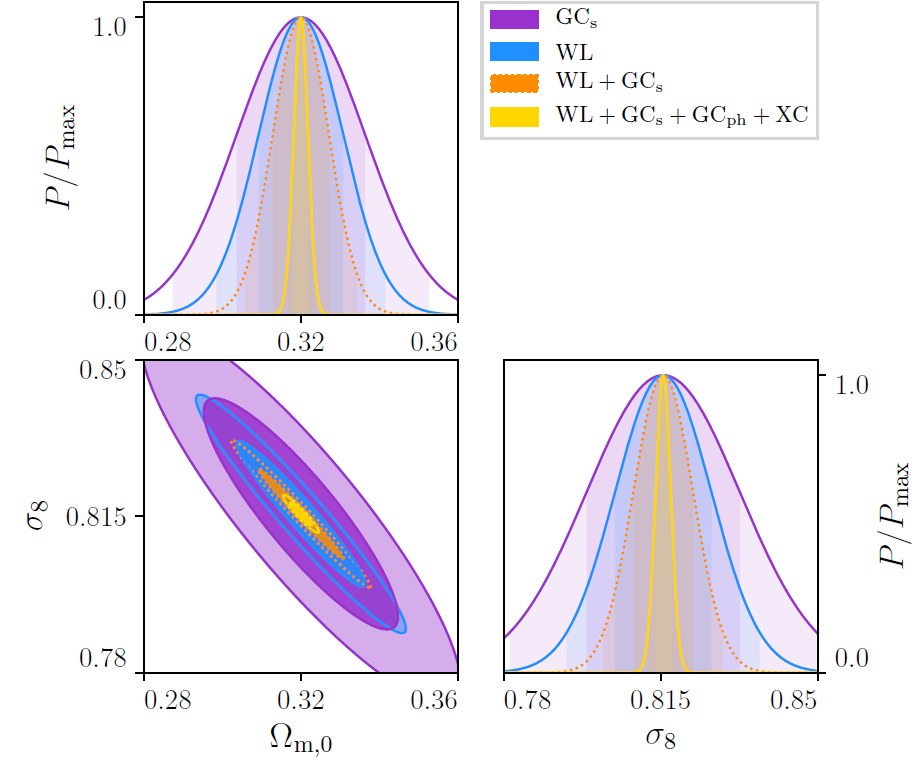To measure cosmological parameters, the Euclid space telescope will use two main probes: gravitational lensing (Weak Gravitational Lensing) and galaxy distribution (Galaxy Clustering). These measurements will allow us to study dark energy and dark matter, which affect the growth of cosmic structures and the accelerated expansion of the Universe.
In addition to its implications on instrumental developments and data processing, Irfu is actively involved in the development of algorithms needed to prepare the extraction of cosmological parameters that will be derived from Euclid measurements.
Coordinated by Valeria Pettorino, physicist at Irfu's CosmoStat laboratory, in collaboration with Tom Kitching (UCL[1]) and Ariel Sanchez (MPE[2]), an international team from the Euclid collaboration with complementary expertise in theory and observation has just completed a 3-year study characterizing the performances expected from Euclid for these observational probes.
Publication an Arxiv: https://arxiv.org/pdf/1910.09273.pdf
[1] University College London ; [2] Max Planck Institute for extraterrestrial physics
Complementary but not independent probes
Euclid will be able to apply both methods on a very large scale:
- on the one hand lensing measures distortion of galaxy images, as light is deflected when it passes close to dark matter;
- on the other hand, galaxy clustering uses light from galaxies as a function of time and space to measure the evolution of large scale structure.
The innovative aspect of this paper is in particular to validate the algorithms for both observables, taking into account the effects of their cross-correlation which are usually neglected. The scientists have shown that the correlation of the effects of the two probes is particularly important for testing different cosmological models and that the accuracy of the results is improved by a factor of three by including these correlations. At DAp, Santiago Casas worked on both probes and Martin Kilbinger on the cross-correlation part.
Optimized tools for parameter extraction
This article, published on the arxiv website, provides the community with reliable numerical codes and methods for Euclid's cosmological predictions. The authors have also made available a guide on how to validate one's own algorithm, with useful references for the community in cosmology and other experiments.
Contacts DAp: Valeria Pettorino (cosmostat page), Santiago Casas (cosmostat page) et Martin Kilbinger (cosmostat page)
In these figures, the contours show the probability that the simulated data for a mission like Euclid match these values for different cosmological parameters. These parameters are related to the expansion of the Universe and the current dark energy (w0, wa), dark matter and ordinary matter density (Ωm,o ). Each contour corresponds to different probes: purple for galaxy clustering, blue for lensing, orange for the combination of both and yellow including cross-correlations. We can clearly see that taking into account the correlation of gravitational lensing and galaxy dispersion effects improves the accuracy of the extracted parameter (accuracy improves by a factor of 3 from purple to yellow).
• Structure and evolution of the Universe › Dark Universe
• Department of Astrophysics (DAp) // UMR AIM
• Euclid






